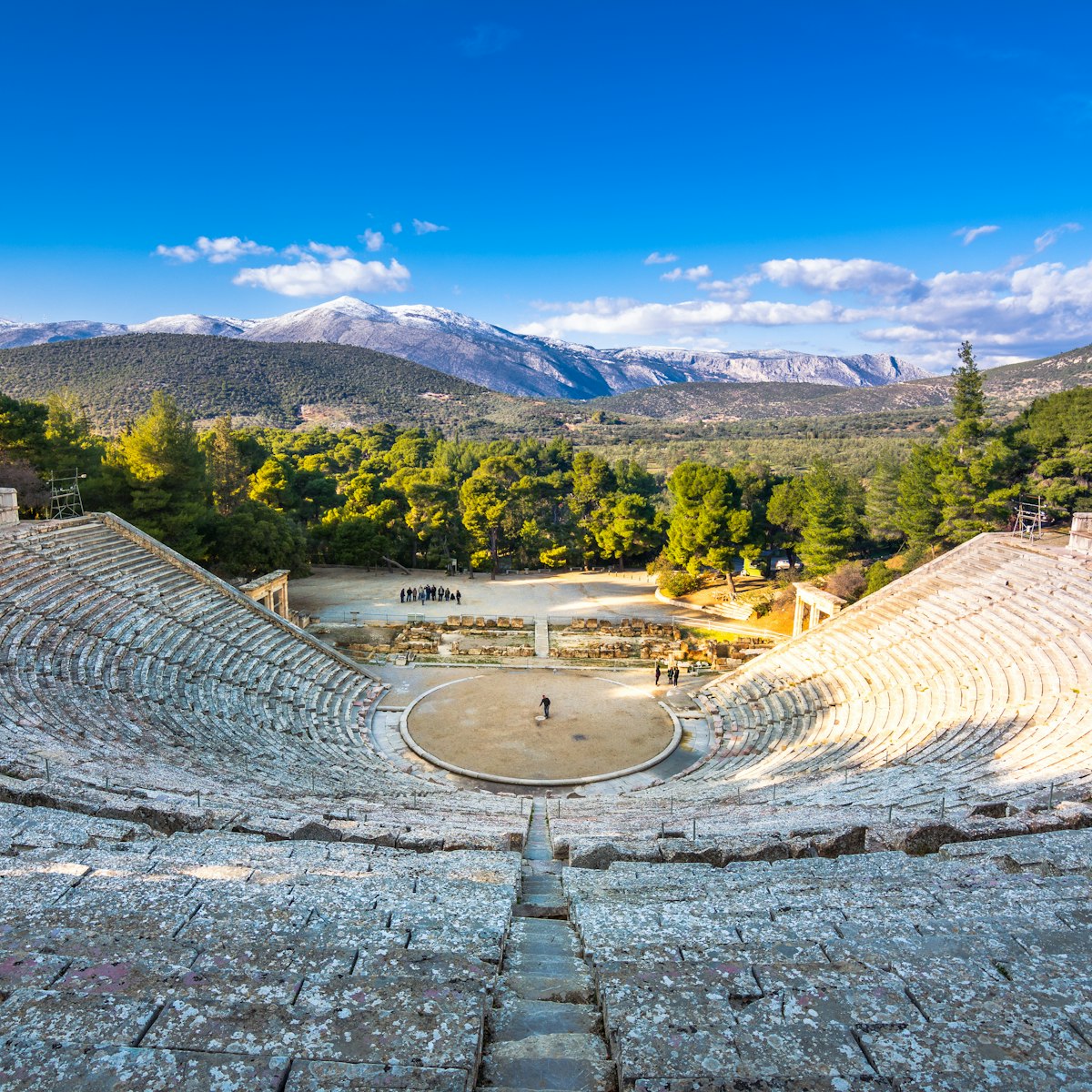Within a modern village loom the extensive yet compact ruins of this ancient (mostly Roman) city. Home to legendary Jason of the Argonauts, stealer of the Golden Fleece, the streets of Ancient Corinth were once trodden by the likes of Pausanias, Roman traveller, and St Paul, who taught the gospel of Christ here. Follow in their footsteps by visiting the Temple of Apollo, the Peribolos of Apollo, the ancient theatre and other highlights. The excellent on-site museum puts everything into context.
An exception to the Roman ruins is the prominent 5th-century-BC Doric Temple of Apollo. To the south of this temple is a huge agora (market) bounded on its southern side by the foundations of a huge 71-column stoa (long colonnaded building). This was likely built to accommodate the bigwigs summoned here in 337 BC by Philip II to sign oaths of allegiance to Macedon. In the middle of the central row of shops is a bema, a marble podium from which Roman officials addressed the people. St Paul was supposedly tried for illegal preaching here.
At the eastern end of the agora are the remains of the Julian basilica. To the north is the Lower Peirene fountain – the Upper Peirene fountain is on Acrocorinth. According to mythology, Peirene wept so much when her son Kenchrias was killed by Artemis that the gods, rather than let all the precious water go to waste, turned her into a fountain.
West of the fountain, steps lead to the Lecheon road, once the main thoroughfare to the port of Lecheon. On the east side of the road is the Peribolos of Apollo, a courtyard flanked by Ionic columns, some of which have been restored. Nearby is a public latrine, where some seats remain.
South of the museum are the columns of Temple E (Pausanias describes it as being dedicated to Octavia, sister of Augustus).
The site’s excellent museum is a must-see and a good way to begin and end your visit. It has main rooms that contain finds from the area (including their prized pieces, two kouros statues that were stolen and retrieved). The next two rooms exhibit fine Greek and Roman statues, mosaics, figurines, reliefs and friezes. A smaller room houses the finds of excavations at the nearby Sanctuary of Asklepios (500 BC); look out for the model body parts left as votive offerings. Don't miss the pretty courtyard with its fine reliefs from the 2nd-century-AD theatre.
Opposite the site entrance is the fairly ruinous ancient theatre, constructed in the 5th century BC for up to 15,000 spectators, and the Roman odeion (indoor theatre), from the 1st century AD.
Note that closing times vary substantially through the winter period according to sunset.







